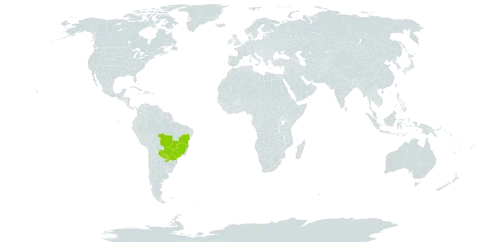Characteristics
It is a large creeping shrub. Plants are often interconnected under the ground by a large network of roots and below ground branches. The leaves are large and a little like mango leaves. Fruit are borne on branches near ground level. The fruit is brown-yellow. It has soft apricot coloured pulp. This contains 1 or 2 large seeds.
| Life form |
-
|
| Growth form |
|
| Growth support |
free-standing
|
| Foliage retention |
deciduous
|
| Sexuality |
hermaphrodite
|
| Pollination |
-
|
| Spread |
-
|
| Mature width (meter) |
-
|
| Mature height (meter) |
0.3
|
| Root system |
-
|
| Rooting depth (meter) |
-
|
| Root diameter (meter) |
-
|
| Flower color |
-
|
| Blooming months |
-
|
| Fruit color |
-
|
| Fruiting months |
-
|
| Nitrogen fixer |
-
|
| Photosynthetic pathway |
-
|
Environment
A tropical plant. It grows naturally in grasslands in central Brazil.
| Light |
-
|
| Soil humidity |
-
|
| Soil texture |
-
|
| Soil acidity |
-
|
| Soil nutriment |
-
|
| Hardiness (USDA) |

|
Usage
The fruit are eaten fresh or used to make juice.
| Uses |
-
|
| Edible
|
fruits
|
| Therapeutic use
|
-
|
| Human toxicity |
-
|
| Animal toxicity |
-
|
Cultivation
Plants are grown from seed.
| Mode |
seedlings
|
| Germination duration (days) |
-
|
| Germination temperacture (C°) |
-
|
| Germination luminosity |
-
|
| Germination treatment |
-
|
| Minimum temperature (C°) |
-
|
| Optimum temperature (C°) |
-
|
| Size |
-
|
| Vigor |
-
|
| Productivity |
-
|
